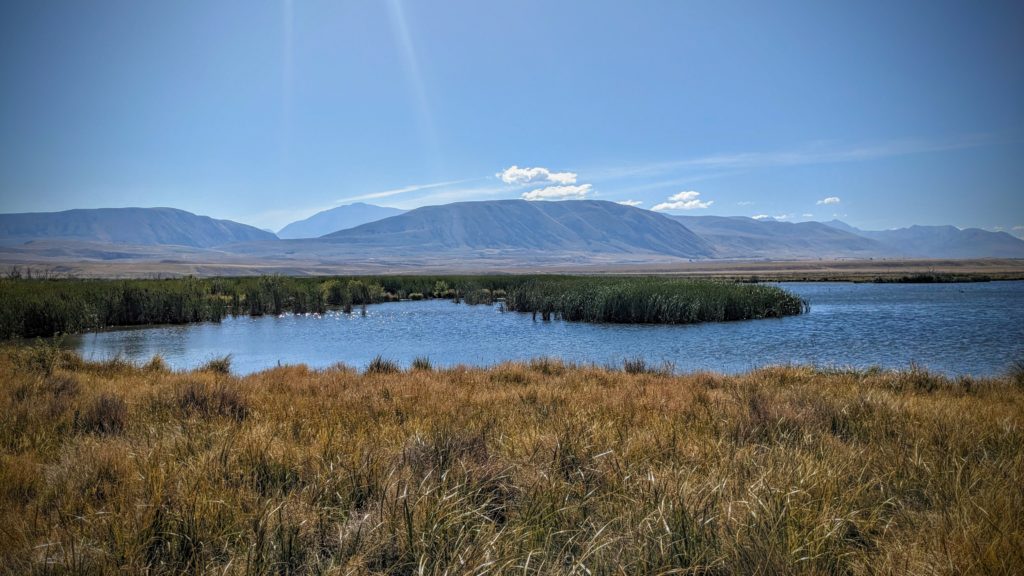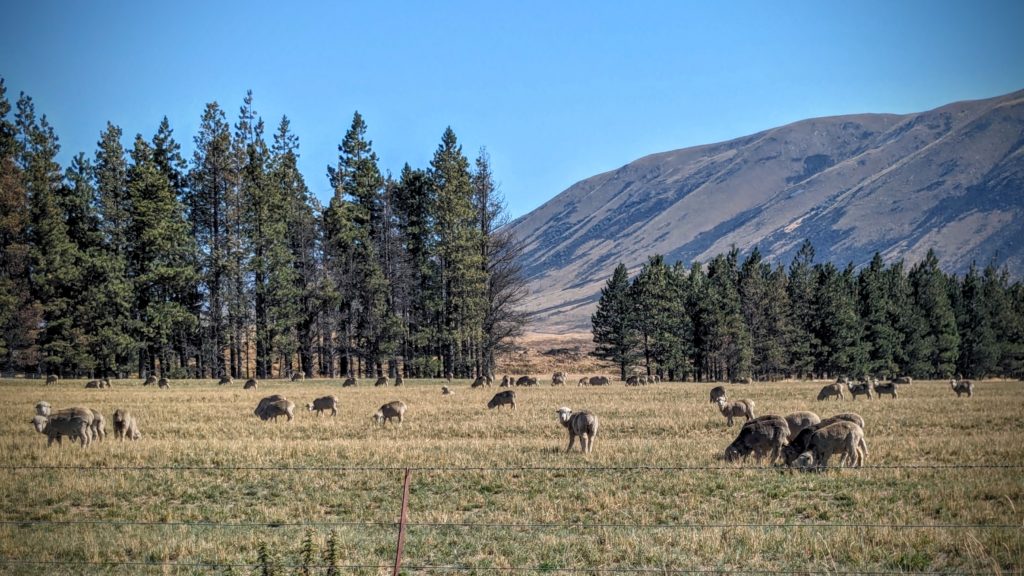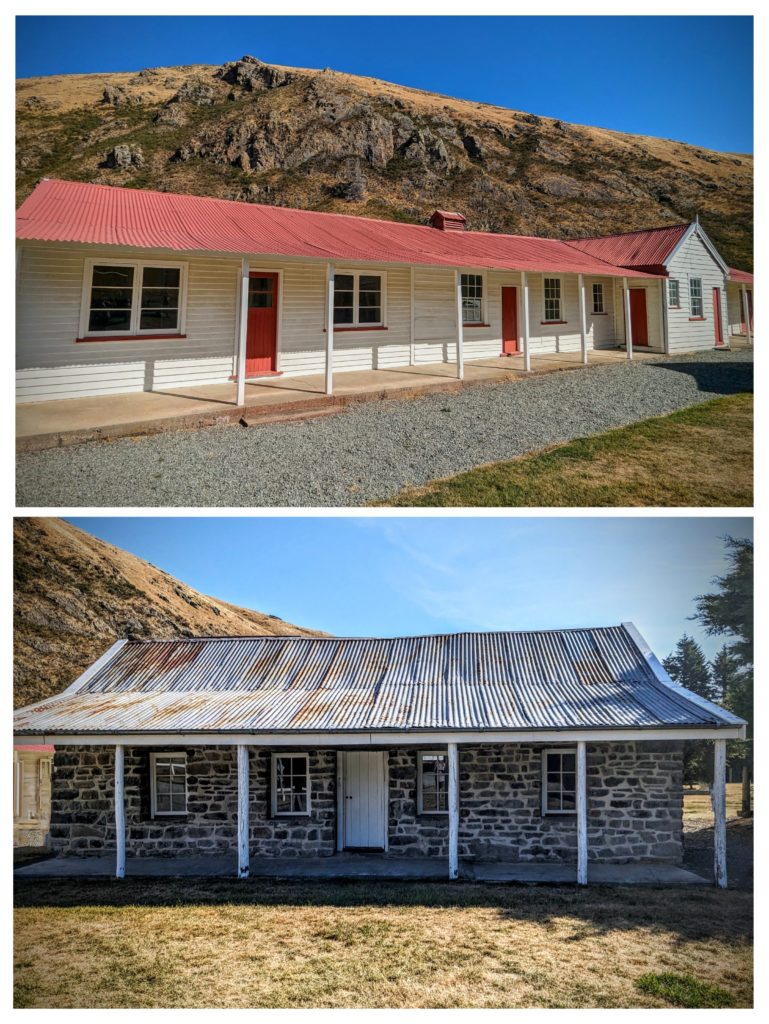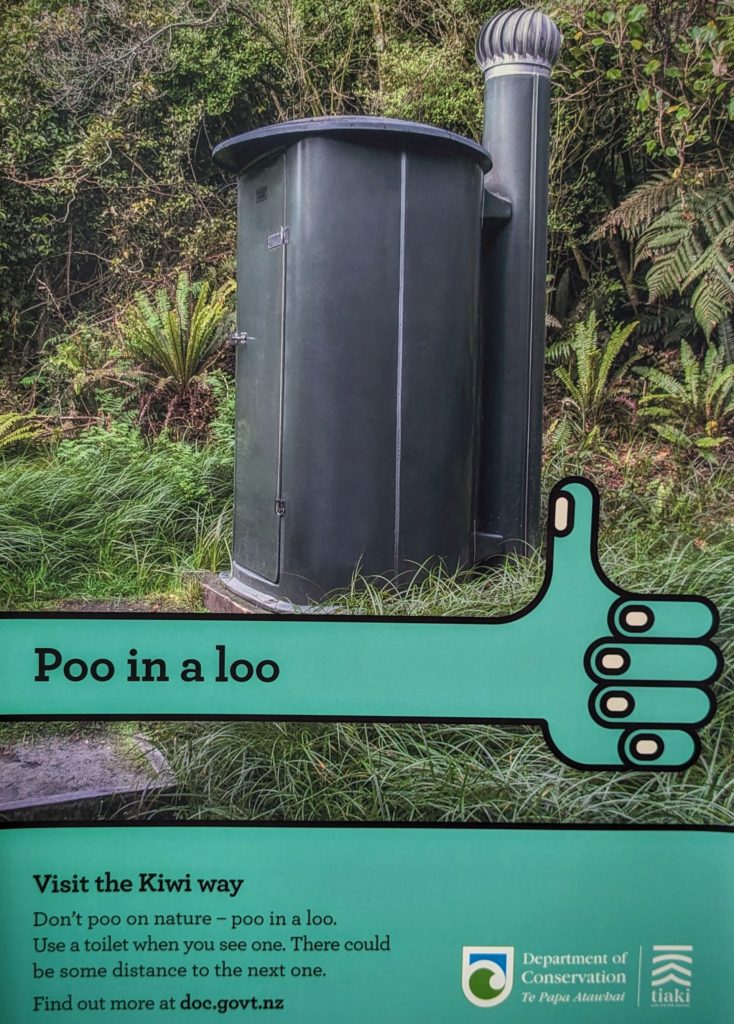February 21 Heron Lake (Day 147)
Another beautiful, bright sunny day, tempered by a cool south wind to relieve your exposed skin of the heat from the sun! We planned to go for a short 5 mile flatand hike until we looked at the map at the trailhead and saw we could drive to several high lakes! We hit the road, which quickly turned to gravel and turned into a high country valley that is mesmerizing! We had no idea! Called the Ashburton Lakes, the high country of Central Canterbury district in the South Island is reminiscent of Nevada; stark, dry, surrounded by mountains, seemingly empty. We crossed a rocky braided river bed and drove past one or two farms (what we consider ranches) to the largest of the lakes, Lake Heron.

Lake Heron at 2277 ft. elevation, with the Southern Alps as a backdrop!
I imagine the landscape was more brushy before European settlers, but the only trees seem to be non-native plantation pines or huge windbreak pine hedges. Maori were never permanent residents here, only seasonal migrants to collect food, fibre or mineral resources. There are trails across the land here that the Maori used to cross the Southern Alps to access the best sources of the coveted pounamu or greenstone, a type of jade that is very hard and carved for tools, weapons and jewelry. It is considered a valuable taonga, a treasured possession of cultural significance. So valuable that the Maori name for the South Island is “Te Wai Pounamu (‘The [land of] Greenstone Water’) or Te Wahi Pounamu (‘The Place of Greenstone’).” “Pounamu is found only in the South Island of New Zealand”.

A series of smaller and more reedy lakes called Maori Lakes had more bird life.
The flat, grassy tussocked land must have seemed ideal for lifestock to the Europeans who arrived in the 1860’s when gold was discovered in the area. The Gold rush was short lived and the miners turned to farming.

It turns out that the Merino sheep breed is best suited to the high dry country. They are the only sheep farmers that are making a living now. Meat and lower grade wool sheep breeds have virtually no value now.
As we returned to the paved road we stopped at the Hakatere Station, a restored ‘ranch’ that was one of the first to be started in the Ashburton Lakes region in the 1860’s.

The top building was the shearers/single men’s bunkhouse. The bottom stone building was the original ranch house.
Amidst all the natural and cultural history to read at the Station is the admonishing to take care of the environment!
